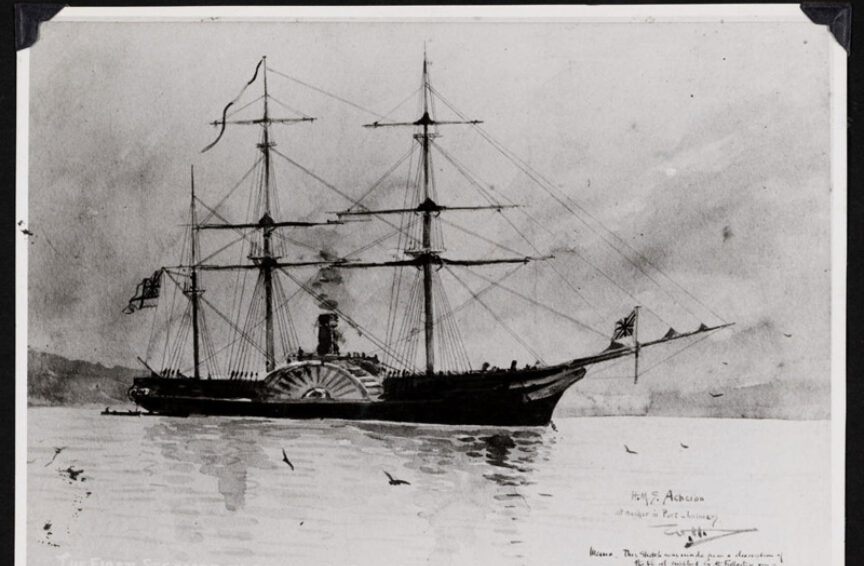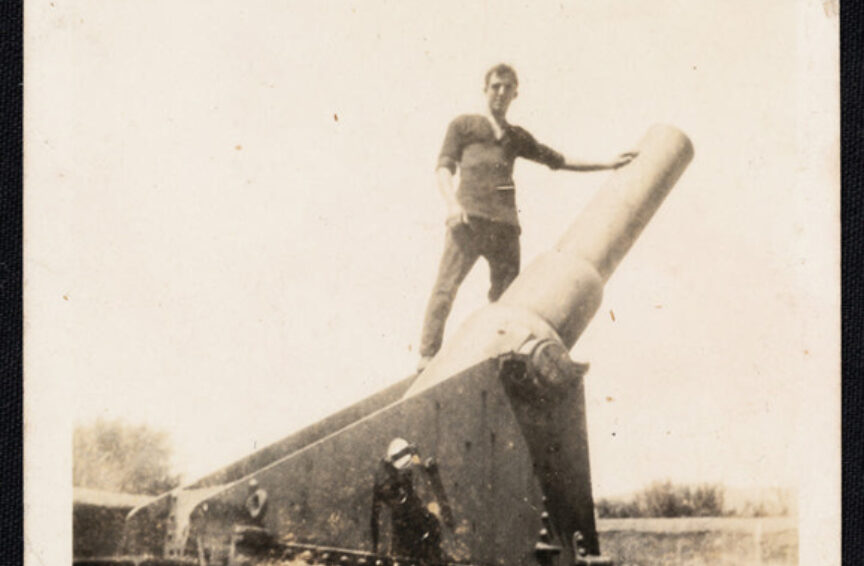PO Box 95
Lyttelton 8841
Te Ūaka recognises Te Hapū o Ngāti Wheke as Mana Whenua and Mana Moana for Te Whakaraupō / Lyttelton Harbour.
The Lyttelton Naval Artillery Volunteers
On a fine day in 1909, ironfounder, mountaineer, and celebrated photographer Charles J. Bekken of Rossall Street, Christchurch, assembled his handmade camera by the banks of the Ōtākaro Avon River on the sloping lawns of the Canterbury Provincial Buildings, facing the Timber Council Chamber with its distinctive bay window. He was there to document the assembled sailors of what appears to be a contingent of the No. 1 Company Canterbury Division of the New Zealand Garrison Artillery Volunteers – or as they were perhaps more widely known at the time, the Lyttelton Naval Artillery Volunteers, or simply the ‘Lyttelton Navals’ – on the occasion of their individual awards of the Certificate of Qualification in Gunnery.
We’re told at the rear far left of the large group photo is Chief Petty Officer W. J. Toomey with his petty officers cap worn at a characteristically rakish angle. His fellow petty officer (unnamed) can be seen in the second photograph in front of Bellamy’s main door alongside the proud winners of the First Prize for Gunnery, namely B. Turner, Kennedy, Diamond, M. Chambers, G. Sowden Day, Marshell M. Roach, Gardner, and M. Turner – at least according to Bekken’s inscription on the reverse.
The Lyttelton Naval Artillery Volunteers were originally formed in the 19th century as part of a nationwide citizens militia coastguard, generally known as ‘the Navals’, authorised under the Militia Act of 1858. Following this proclamation, volunteer units formed across the country including, of course, the strategic port of Lyttelton. Starting with two Lyttelton rifle companies in 1860, a Drill Shed was built in Market Place in 1864, and the following year the Lyttelton Artillery Volunteers were formed.
While many of their North Island compatriots were mobilized in the Waikato and subsequent Wars against the Māori Kingitanga tribes, Te Waipounamu South Island remained largely free of troubles. In 1880, a volunteer Lyttelton Naval Brigade was formed to support the first port defences that had been built that year, and it is this formation that became the Lyttelton Naval Artillery Volunteers in 1883. Following the 1885 ‘Russian scare’ the force was expanded to support the Battery Point and Jervois Fort gun installations protecting Whakaraupō Lyttelton Harbour from Imperial competitors.
By 1898, a typical day at the 15 day volunteer ‘Lyttelton Navals’ camp at Fort Jervois consisted of:
- 4:30 AM – Reveille
- 5 AM – Gun drill
- 6:30 AM – Breakfast
- 7 AM – Launch to Lyttelton for work
- 5:30 PM – Return
- 6 PM – Evening meal
- 7 PM to 8:45 PM – Drill
- 9:30 PM – First Post
- 10 PM – Last Post
- 10:30 PM – Lights out
- Sundays free
From 1902 onwards, the New Zealand defence forces began to be modernised in line with the British Imperial forces, with major changes to the naval artillery volunteer units who were regrouped into Divisions of the Garrison Artillery Corps and rebadged as the Garrison Artillery Volunteers. In 1905 the Lyttelton Naval Artillery Volunteers thus became the No. 5 Company of the Garrison Artillery Volunteers, and then finally, in 1907, the No. 1 Company Canterbury Division of the New Zealand Garrison Artillery Volunteers.
Thanks to the Ashburton Museum for sharing their photographic research.
See also https://navymuseum.co.nz/

